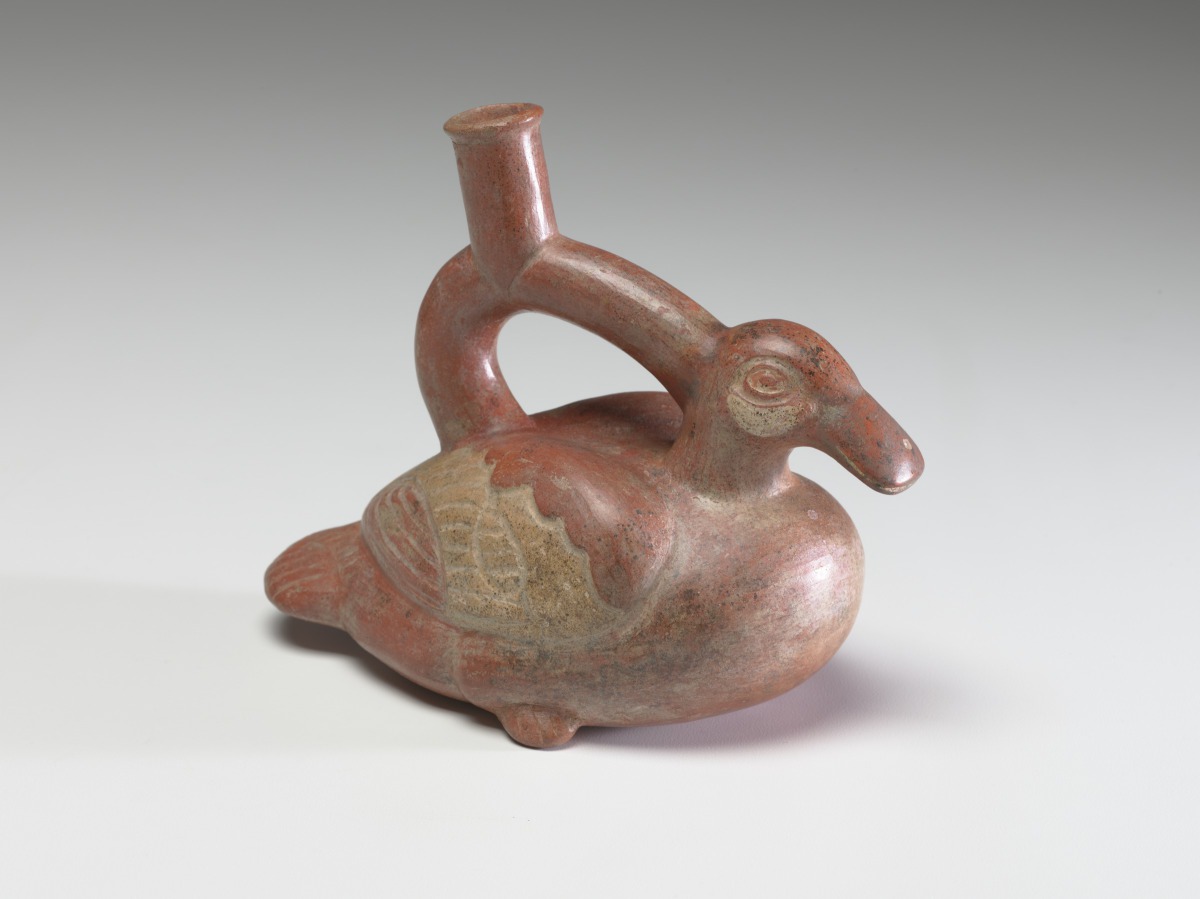
Stirrup Vessel in the Form of a Duck (Primary Title)
Unknown (Artist)
Naturalistic representations of ducks, as depicted on this mold-made polychrome vessel, provide insight into the role of animals in Moche art. Many animals are depicted anthropomorphically because they were thought to have human characteristics. However, ducks, which were among the few species of domesticated animals in ancient Peru, were rarely depicted with anthropomorphic traits. Sacred animals, such as jaguars or owls, were not consumed or domesticated. In fact, they were considered part human and able to assist shamans throughout healing ceremonies. Domesticated animals, including ducks and guinea pigs, did not have an intrinsic human nature. Animals that were consumed were considered wholly animal because, otherwise, the eating of anthropomorphized animals would have violated rules against cannibalism.
Pre-Columbian
Early Intermediate
Gift of Mr. and Mrs. Sandford G. Etherington
Image released via Creative Commons CC-BY-NC
Some object records are not complete and do not reflect VMFA's full and current knowledge. VMFA makes routine updates as records are reviewed and enhanced.

